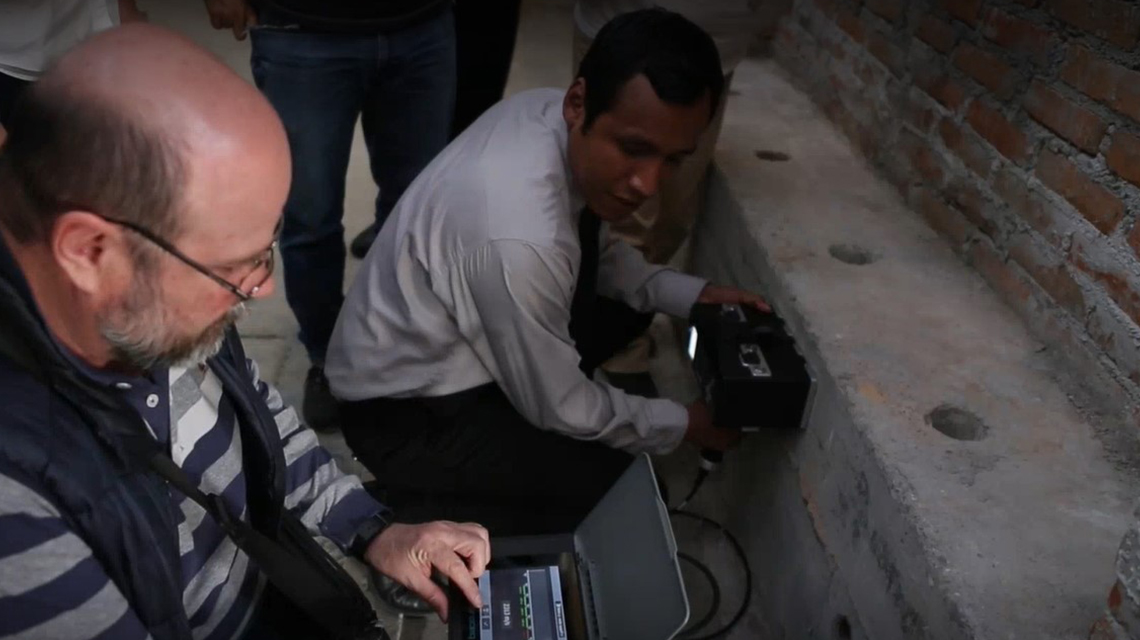To establish the centres, the IAEA organized training and certification of experts in NDT techniques through the ongoing regional TC project in Buenos Aires from 7 to 18 November. Nine participants from Argentina, Brazil, Costa Rica and Mexico were newly certified or recertified in advanced methods of digital radiography using X rays and gamma rays. They are now qualified to inspect civil engineering structures using the latest NDT techniques.
A further 24 participants from 10 countries — Argentina, Chile, Costa Rica, Cuba, Dominican Republic, Ecuador, Mexico, Peru, Uruguay and Venezuela — qualified in civil methods of NDT, including visual inspection and ultrasonic testing, which uses soundwaves to detect flaws in and thickness of materials.
“The certification represents a very important boost to the promotion of NDT-methodologies in the civil engineering field in our respective countries,” said Eduardo Robles, Project Head at Mexico’s National Institute of Nuclear Research, one of the newly certified experts and representative of Mexico’s NDA response.
The training and certification were provided by the non-profit Italian Society for Non-Destructive Testing Monitoring Diagnostics (AIPnD) under a Practical Arrangement with the IAEA and in accordance with ISO 9712 on non-destructive testing, as well as ISO 17024 on general requirements for certification bodies, enabling the experts to train others.
Hernán Xargay, Head of Division at the Argentine National Atomic Energy Division, and coordinator at the new response centre in Argentina, said: “The training and certification at the ISO level organized by the IAEA creates confidence that international requirements are met and supports harmonization of methodologies throughout the region.”
Mario Barrera Méndez, Quality Control Coordinator at the Chilean Nuclear Energy Commission, who leads the new response centre in Chile, agreed: “The network established by the IAEA is the cornerstone of the region’s new emergency response capability. As one of the four response centres, we intend to share the vast amount of knowledge we have gained in NDT techniques where it’s needed in Latin America and the Caribbean.”
Non-destructive testing is a quality control method that uses nuclear techniques to examine materials without damaging them. The IAEA supports the use of non-destructive testing technology to maintain stringent quality control necessary for the safe operation of nuclear and other industrial installations. It helps countries train staff in applying the technology and provides equipment. Read more about the IAEA’s work on non-destructive testing.

